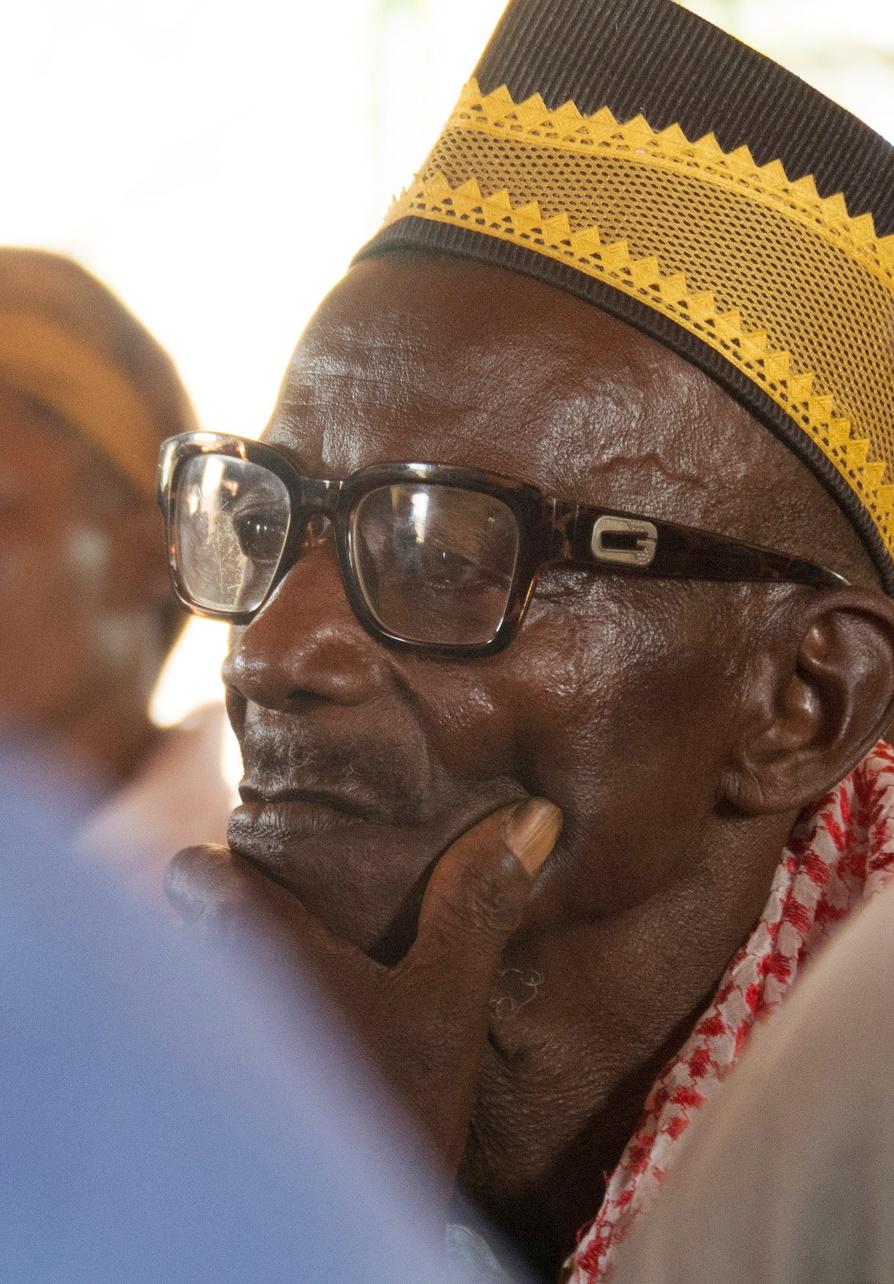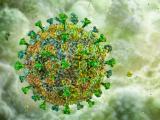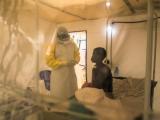Ebola progress held steady in Sierra Leone and Liberia last week, but the number of confirmed cases in Guinea increased, with the country's response indicators showing a mixed picture amid sparks of community resistance, the World Health Organization (WHO) said today in its weekly epidemiologic update.
The outbreak region registered 37 confirmed cases last week, up from 30 reported the week before, the WHO said. Guinea's cases increased from 21 to 28, with Sierra Leone reporting 9 lab-confirmed cases, the same as the week before. Liberia hasn't reported any new cases since the middle of March.
Meanwhile, the geographic scope of the outbreak shrank a bit last week, with 8 districts in Guinea and Sierra Leone reporting cases, down from 10 the week before. The hot spots are still located in western Guinea, especially Forecariah district near the border with Sierra Leone. The few cases in Sierra Leone are coming mainly from three western districts in an area that includes the capital city, Freetown.
Country-specific trends
Sierra Leone's response indicators continue to be encouraging, but those for Guinea still show mixed signals, the WHO said. Regarding deaths from Ebola in the community, a sign of sick people not being isolated or treated, Sierra Leone reported only three last week, with Guinea reporting eight. The percentage of new cases arising from known contacts, an indicator of how clearly transmission chains are known, was 67% in Sierra Leone, while Guinea's level (44%) stayed below 50% for the second week in a row.
However, Guinea saw an increase in the number of lab samples tested for the fourth week in a row, with 10% positive for Ebola. The country has intensified its response actions ahead of the rainy season, and a case-finding and community-sensitization campaign took place in Forecariah district from Apr 12 to 15, which resulted in 29,000 household visits with 23 suspected cases identified and tested. The WHO said similar campaigns are slated for five other areas from Apr 18 to 21: Boffa, Conakry, Coyah, Dubreka, and Kindia.
Guinea's Ebola situation has had several ups and downs throughout the outbreak, and community resistance there has been a recurrent problem. The WHO said today that the country's security situation still faces challenges, with five districts reporting community resistance incidents last week and civil unrest in Conakry affecting field operations.
Liberia's last case-patient died on Mar 27, and two contacts were still being monitored as of Apr 11. If no new cases occur by May 8, 42 days (two incubation periods) after the last case was confirmed, the country will be considered free of the disease.
In a separate report today, the WHO said one of the keys to success in the Ebola battle in Liberia's most populated district—Montserrado County—was a decision by the government to decentralize the response and involve local people. The WHO said that at a time when cases were rising exponentially, officials decentralized the overall Ebola management system by dividing the country into four sectors, each having a smaller system, allowing for better quality control in terms of surveillance, case finding, contact tracing, and management of key response actions.
The WHO said the new method created smaller localized teams, which fostered a more nimble response and empowered local people to boost community engagement. It added that a new performance-based management system made staff members accountable for their work. An analysis later found a direct link between implementing full control interventions and the decline and cessation of new cases in Liberia.
"The success in controlling the Ebola outbreak in Liberia is partially due to this sectorial approach, which is a good model for work in other affected countries and for future outbreaks," the WHO said.
One new Ebola infection in a healthcare worker—in Guinea—was reported last week, raising the total so far to 864 cases, including 503 deaths.
The WHO today put the overall number of confirmed, probable, and suspected Ebola cases at 27,791, with deaths reaching 10,689.
Sexual transmission developments
A WHO official said that tests on a man who last September was declared free of Ebola in Liberia showed traces of Ebola in his semen, 6 months after recovery, Agence France-Presse (AFP) reported today. Tarik Jasarevic, a WHO spokesman, told AFP that the man provided a semen sample that was positive for Ebola 175 days after his negative blood test.
Jasarevic told CIDRAP News in an e-mail that the WHO hasn't changed its recommendations, but he said more research is needed, which will enable the WHO to give survivors more detailed guidance. "In the meantime we just advise survivors to take extra caution," he wrote.
He added that experts need to understand if the man's results are an anomaly or if there are people who might have parts of the Ebola virus in their semen for longer periods. "It will take time to do these studies," he said.
The WHO addressed the current research status and knowledge gaps about sexual transmission of the Ebola virus in an Apr 4 document on its Web site. That document said no formal evidence of sexual transmission in survivors has been found but that it can't be ruled out and that men who have recovered from the disease should be aware that seminal fluid may be infectious for at least 3 months after Ebola symptom onset.
Because sexual transmission can't be ruled out, male and female survivors should abstain from all types of sex for at least 3 months after symptom onset and use condoms correctly and consistently if abstinence isn't possible. As an extra precaution, it said survivors should consider properly using condoms for all sexual acts beyond the 3-month period until more information is known.
Immune response surprises
In research developments, scientists who analyzed blood samples from four patients who were treated for Ebola in Emory University Hospital's high-containment unit found some surprising things about patients' immune response to the virus, according to a report published yesterday in the Proceedings of the National Academy of Sciences.
The team, led by researchers from the US Centers for Disease Control and Prevention (CDC) and Emory, observed striking activation of both B and T cells in all four patients (5% to 30%, compared with 1% to 2% in healthy controls). The most pronounced response they saw was in CD8 T-cells, with more than 50% of the cells showing activation and proliferation markers. They wrote that the findings suggest all four patients developed a robust immune response during the acute infection phase, which runs counter to the assumption that the Ebola virus is highly immunosuppressive.
Another surprising finding was that patients showed sustained immune activation after they cleared the virus from plasma, even 1 month after discharge from the hospital. The team also identified CD4 and CD8 T-cell responses to several Ebola virus proteins, most notably the viral nucleoprotein. They concluded that the findings should be helpful for developing vaccines against Ebola.
See also:
Apr 15 WHO situation update
Apr 15 WHO report on Liberia's decentralized response
Apr 15 AFP story
WHO backgrounder on sexual transmission of the Ebola virus
Apr 14 Proc Natl Acad Sci abstract



















